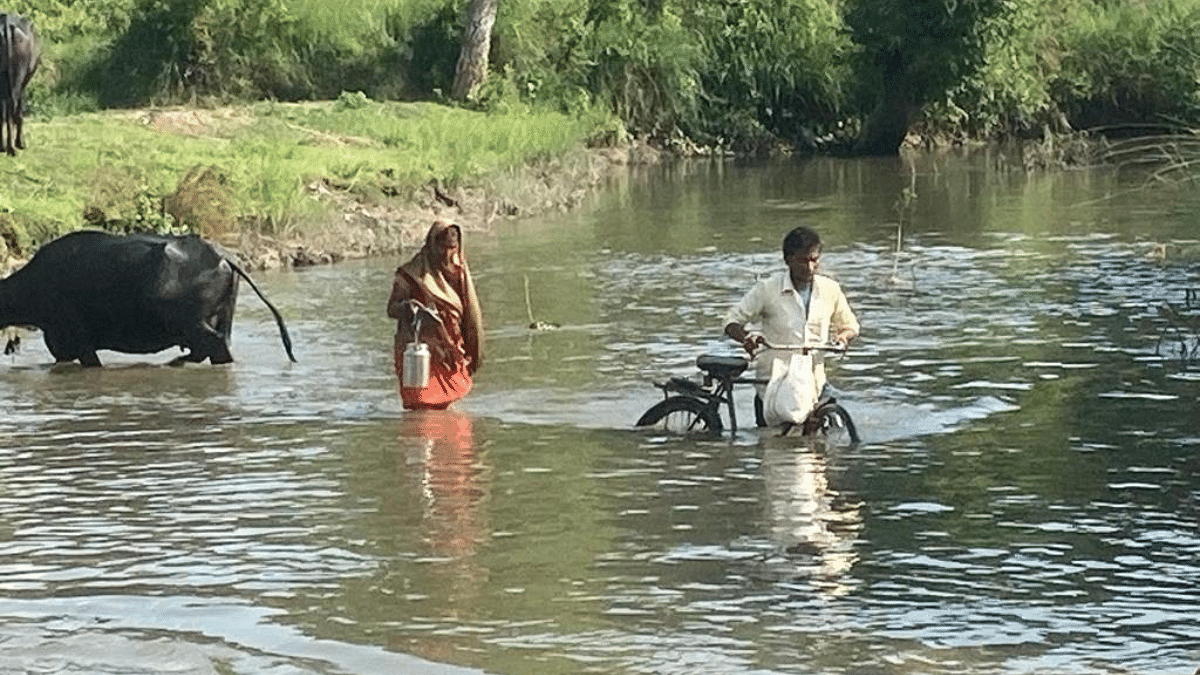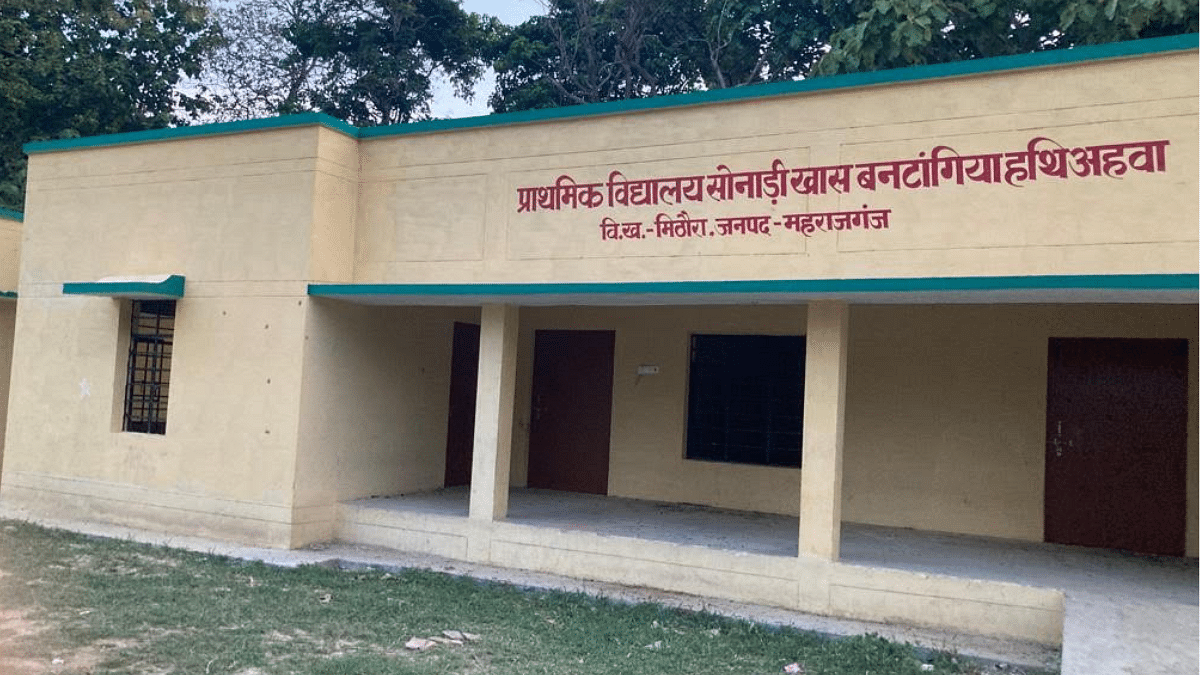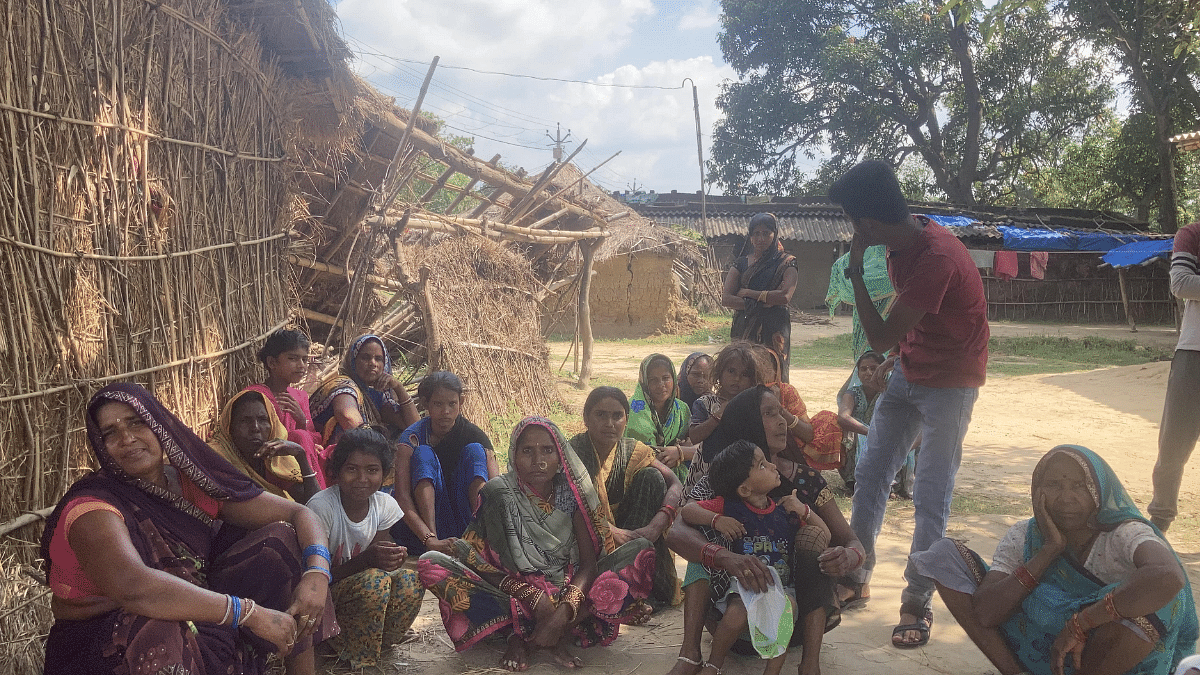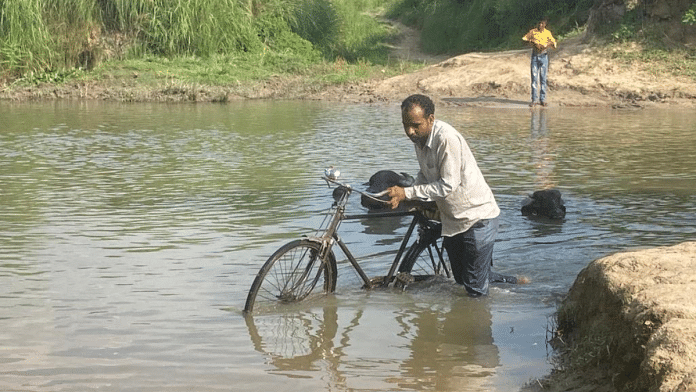Maharajganj/Gorakhpur: The Vantangiya settlements in the Sohagi Barwa wildlife sanctuary in Uttar Pradesh call Chief Minister Yogi Adityanath a ‘masiha’ or saviour. He took forward a process that began under the Mayawati government with the distribution of land holdings or pattas. He clubbed tribal settlements with adjacent villages to declare as many as 42 formerly secluded and remote forest-dwelling tribal settlements in the tiger reserve as ‘revenue villages’, according to state government figures.
The new recognition for the communities in the Maharajganj district also brought other forms of mainstreaming. Yogi introduced tribal communities to houses, solar panels, anganwadi centres and schools. They voted for the first time in the April 2021 panchayat elections and in the UP assembly elections earlier this year.
But now that they have jumped on to the development treadmill, they want more and more symbols of integration. This is posing the classic conservation contradiction between forest protection and tribal people’s rights.
Similar policy and political tensions have played out across India since the landmark Forest Rights Act (FRA) came into force in 2006 under the UPA government. The law grants forest dwellers the right to a road. But constructing a road through the dense forest is a difficult decision to make.
Around 1.5 lakh people live inside the forest villages in the Sohagi Barwa wildlife sanctuary. Like the five other villages inside the protected forest, Hathiyahwa does not have a concrete access road. “Pregnant women have to be carried on a cot to the nearest Chowk area [nearest health facility], about 12 kilometres from here, for their delivery. Children don’t have a proper road to go to the nearest school in neighbouring Baluhayiya village, about two kilometres away,” says 45-year-old Jitendra Sahni. The government built a school in Hathiyahwa village, but it is yet to appoint a teacher.

Sahni’s forefathers have called the Vantangiyan settlements home since the 1900s. That is when the British had asked them to relocate from nearby areas like Gorakhpur to plant and maintain trees.
Also read: Wild exotic pets aren’t glamorous. Begin by amending Wildlife Act
Struggle for basic needs
It’s not just Hathiyahwa, but villages near the Sohagi Barwa Sanctuary on the outside are also demanding a road. The only bridge connecting Usarhawa village to Maharajganj city was washed away in the monsoon rains last year.
“We have to travel for 14 kilometres via the jungle to reach Maharajganj city,” Ramanand, husband of the village kotedar, said. With the bridge, it was just half the distance to the city. Now, men and women roll up their pants and sarees to cross the river channel flowing under the broken bridge while deploring the state of affairs.
In an emergency, villagers are isolated. “An ambulance cannot come to us. It stops near Katehra village, which is about one kilometre from here. During the rainy season, the situation worsens,” says 35-year-old Kamlawati from Usarhawa village. Here, too, education takes a backseat. “The only school teacher appointed didn’t turn up for flag hoisting on Independence Day.”

After pressure from the villagers and local MLA Jaimangal Kanojia, the Public Works Department (PWD) prepared an estimate for the construction of the road. It has also forwarded a request to the state forest department.
But a concrete road in the depths of a sanctuary will need environmental clearance from the Ministry of Environment and Forest. And it could well be an exercise in futility as the clearance does not come easy. Even PWD officials are not very optimistic.
“Earlier too, we have been denied permission in such cases. The proposal will be sent to the central forest ministry, and it will take time to check the merit of the case,” a PWD official says.
Maharajganj MLA Jaimangal Kanojia admits that the plight of residents in two of the five Vantangiyan villages—Hathiyahwa and Baluhayiya— is “very poor.”
“They are cut off from their surrounding area for four months after rains. Two boats have been provided to these villages from my side. They need access roads, but there is a concern that too much construction activity can harm the wildlife because these villages are right inside the sanctuary,” he said.
The chief minister is expected to hold a meeting with the forest department, and other stakeholders within a few days. Kanojia proposes that villagers be given houses and land for farming outside the protected forest area. “It will be better for both wildlife and the villagers,” he says.
The Scheduled Tribes and Other Traditional Forest Dwellers (Recognition of Forest Rights) Act, 2006 guarantees villagers the right to a road. The Central government can provide for diversion of forest land involving felling of trees not exceeding 75 trees per hectare for a pucca road. But any activity in protected areas and those adjoining them can only take place following an approval from the Forest Advisory Committee as directed by the Supreme Court and as stipulated in the Wild Life (Protection) Act, 1972.Tiger habitats are viewed as specifically notified areas under the Act.
“As the Forest Conservation Act and the Wildlife both come into play, the procedure for laying metal roads is lengthy. Disturbance to wildlife cannot be ruled out. Reduced sightings of tigers and leopards have recently been reported,” says DM Satendra Kumar.
Also read: Why wildlife body IUCN’s new data on tiger numbers could prove to be a conservation gamechanger
Road to poaching
Forest officials and environmentalists are worried about the impact a road will have on wildlife. Protecting forests and wildlife are at stake here, as much as people’s aspirational needs.
There are fears that a road will make wildlife in the sanctuary easy pickings for poachers who are already active in the area. Incidents of poaching have been reported in the jungle area of Maharajganj in the past, says local activist Feroz Kumar Bharti.
In December 2021, forest officials apprehended notorious poacher, Deepu Singh, and seven members of his gang with five kilograms of chital deer flesh. “We received a tip-off that the poachers were in the South Chowk range of the sanctuary,” says DFO Pushp Kumar. Apart from the meat, forest officials seized a blood-stained axe and a live cartridge.
In July 2021, a person later identified as Ram Bachan was arrested with five dead bats in the South Beet area of Nichlaul forest range in the sanctuary.
Sanctuary of leopards and migrant tigers
The Sohagi Barwa Sanctuary is home to 61 leopards, but there are no tigers who call it home today. Only migrant tigers have been sighted here, shows data from the 2018 tiger census. That does not take away from the importance of the sanctuary. Wildlife enthusiasts say that If conditions are right, the tigers will return.
The sanctuary is part of a contiguous large patch of forest area covering the Dudhwa Tiger Reserve in UP and Bihar’s Valmiki Tiger Reserve. The patch is connected through the Shivalik forests of Nepal.
By themselves, Dudhwa, Sohagi Barwa and Valmiki habitats within India have limited long-term value, unless it’s managed as a holistic landscape including connectivity and source population in Nepal, states a 2008 National Tiger Conservation Authority (NCTA) report on the ‘Status of Tigers, Co-predators and Prey in India.’ This ‘holistic’ approach includes populations in Nepal, which would require “international cooperation and commitment”.
As the Sohagi Barwa wildlife sanctuary is connected with Valmiki Tiger Reserve and Royal Chitwan National Park in Nepal, it has been designated as an Important Bird Area (IBA) too. A 2016 study by the Bombay Natural History Society and Principal Chief Conservator of Forests of UP and ornithologist Rajat Bhargava found that the sanctuary remains important “as a potential area for conservation”. “The traces of tiger signs indicate the sanctuary’s potential to rehabilitate tigers which are presently not easily sighted in this area,” it says.
Bhargava explains that the sanctuary has continuous patches of terai grasslands, which need protection, as it touches Suhaildev and Katarniaghat wildlife sanctuaries up to the Valmiki Tiger reserve in Bihar. “The area will always have an invisible population of birds and animals like tigers who will come out if you provide them with good habitat. It is a beautiful and diversified area for birds like Pin striped Tit- babbler, Adjutant stork, Sarus crane, and several grassland birds who were all found in the sanctuary’s periphery, surprisingly,” he says.
Though more detailed studies on fauna that will thrive in the region need to be conducted, Bhargava stresses on the importance of conserving the terai grasslands. The tigers will start coming here once the habitat improves, he adds.
But in the age-old human-animal conflict, land is a limited resource.
Also read: Eight states tell Supreme Court they wrongly rejected claims of tribals over forest land

Villagers demand more land holdings
The patta (land holding) distribution in forest villages took place in 2011 when Mayawati was chief minister on the basis of the number of family members based on data from 1986. The families grew, but not their land. A single patta was simply not enough.
“I have two sons and need fields for them,” says Lallu Ram from Hathiyahwa village, who got a house under the CM Awas Yojana. “When the pattas were distributed, only 210 families got houses.”
His demand for more land is a common refrain across the villages. Hundreds of villagers are demanding that the holdings given to them be consolidated— it’s called chakbandi in local parlance.
Wildlife protection experts are concerned about the future of the growing population of forest villages. Like Maharajganj MLA Jaimangal Kanojia, they are advocating that forest dwellers be given alternative places for residence.
Not all villagers are ready to move out of the sanctuary, not after they got a taste of ‘development’.
There was a time when Roshan Lal Sahni, an elderly villager called the “mukhiya”, was all for leaving the forest. He lives in Forest Village-24 in the heart of the sanctuary and had been demanding that villagers be relocated to Madhwaliya Gau Sadan area or Cherry Farm areas in Maharajganj. But he is no longer singing the same tune.
“We were ready to leave the forest a few years back and wanted to move to the city. But since we have got a house, electricity, school and other facilities, we are fine here. We only need an access road,” he says.
Also read: ‘No public consultation’, razed forests: Manipur landslide raises questions on rail project
Whose land is it anyway?
It’s a conundrum, and a tricky one at that. Environmental law expert Ritwick Dutta points out that legally, the government owns the land. The FRA provides for the conversion of forest villages into revenue villages. It recognises the villagers as rightful dwellers, but only till the time their presence is not detrimental to the wildlife.
“The demand for more land will amount to illegality,” Dutta says.
The FRA only makes the tenant the owner of an area of actual occupation not exceeding four hectares, and does not provide for expansion of the land parcel.
“These villagers were brought in the forests by the government as labourers for felling of trees, but we have to remember that they are not owners of the land,” says Dutta, who is founder of Delhi-based Legal Initiative for Forest and Environment (LIFE), a public interest environmental law group working for the protection of flora and fauna.
The Act does not give a right to forest dwellers to expand the holdings given to them. For people like Sahni and Ram, this is unfair as they were relocated to the sanctuary in the first place. It holds the historical memory of their villages. “The problem is that if the dwellers occupy 50 acres today, they require about 80-90 acres of the land in the next few years and to fulfil this requirement, more forest land will be required,” Dutta explains.
For the Vantangiyan dwellers, the issue of land ownership and consolidation is an economic and emotional one although they agree that living in the jungle is not feasible in the long term.
Vinod Tiwari, head of the Sarvhitkari Sewa Ashram – an organisation working for the cause of the Vantangiyan—told ThePrint that the plantations in the jungle were grown by the forefathers of the villagers.
Citing the example of Vantangiyan villages in neighbouring Gorakhpur, he says that the land consolidation process is complete in one of the villages there and going on in three others. “Pucca roads have already reached inside the villages there,” he says, adding that the issue is politically sensitive as the Vantangiyan are a loyal vote bank who have consistently voted for the Yogi-led BJP government.
“Eviction is a far cry,” he says.
(Edited by Ratan Priya)






